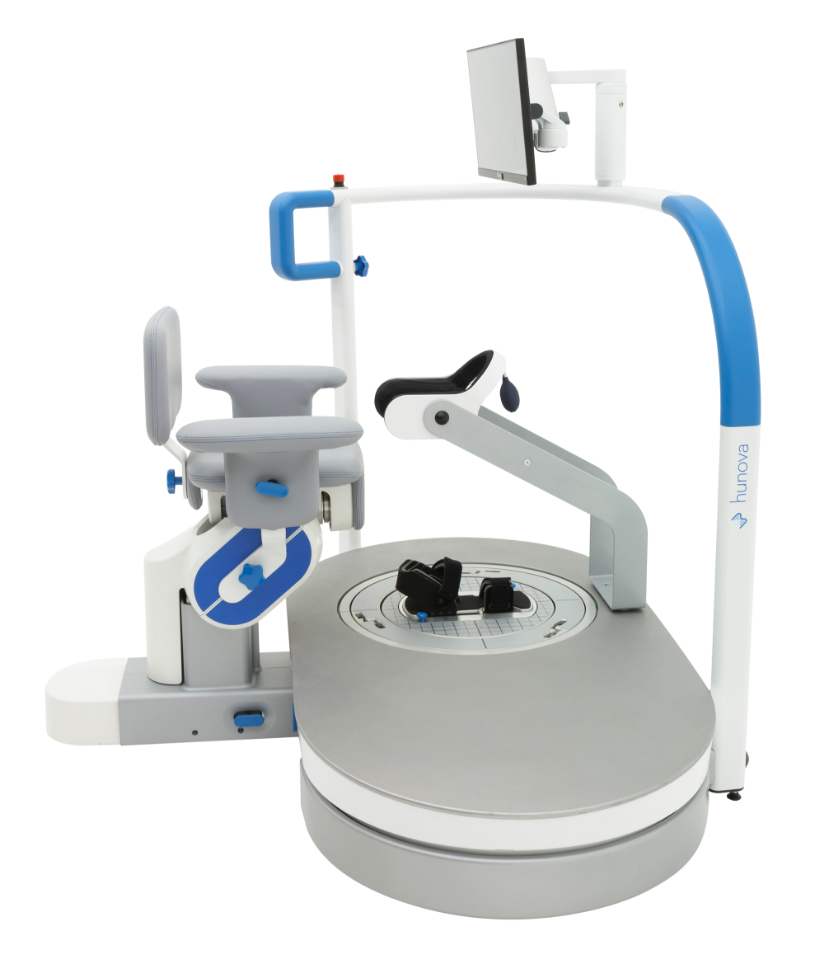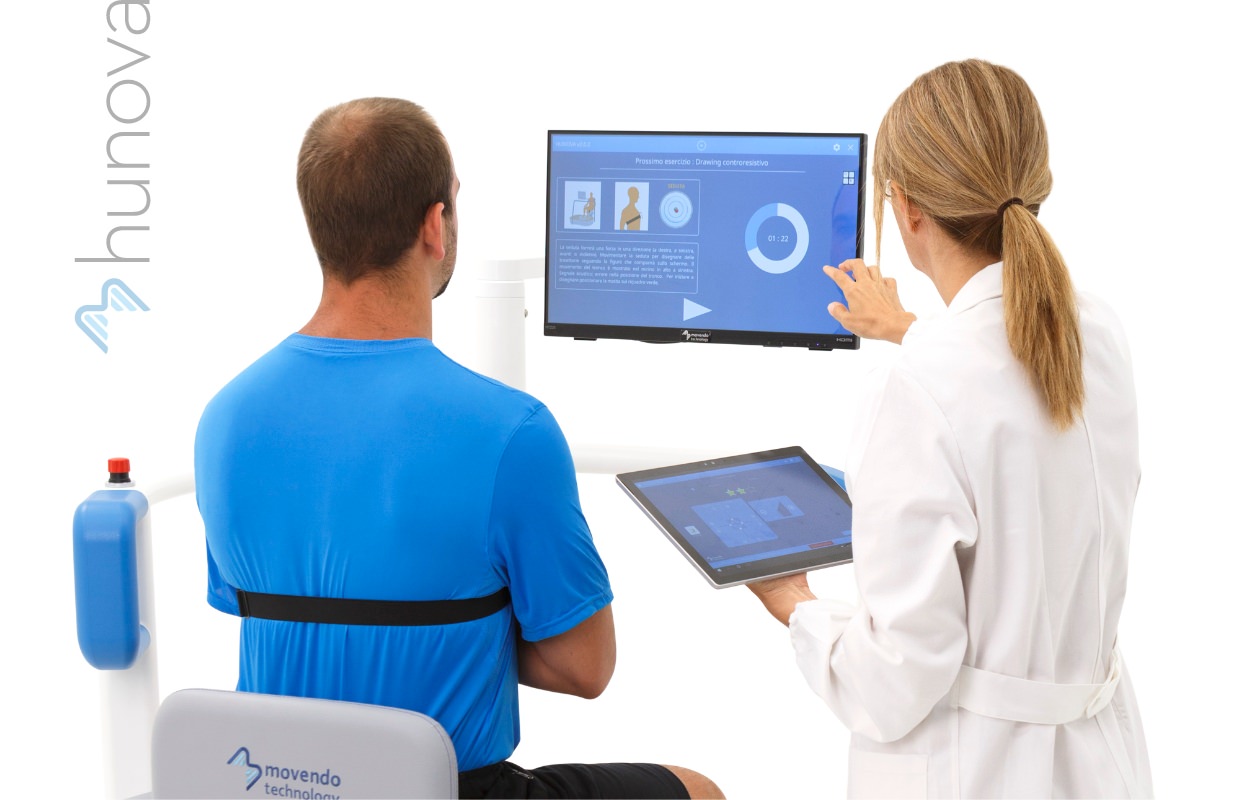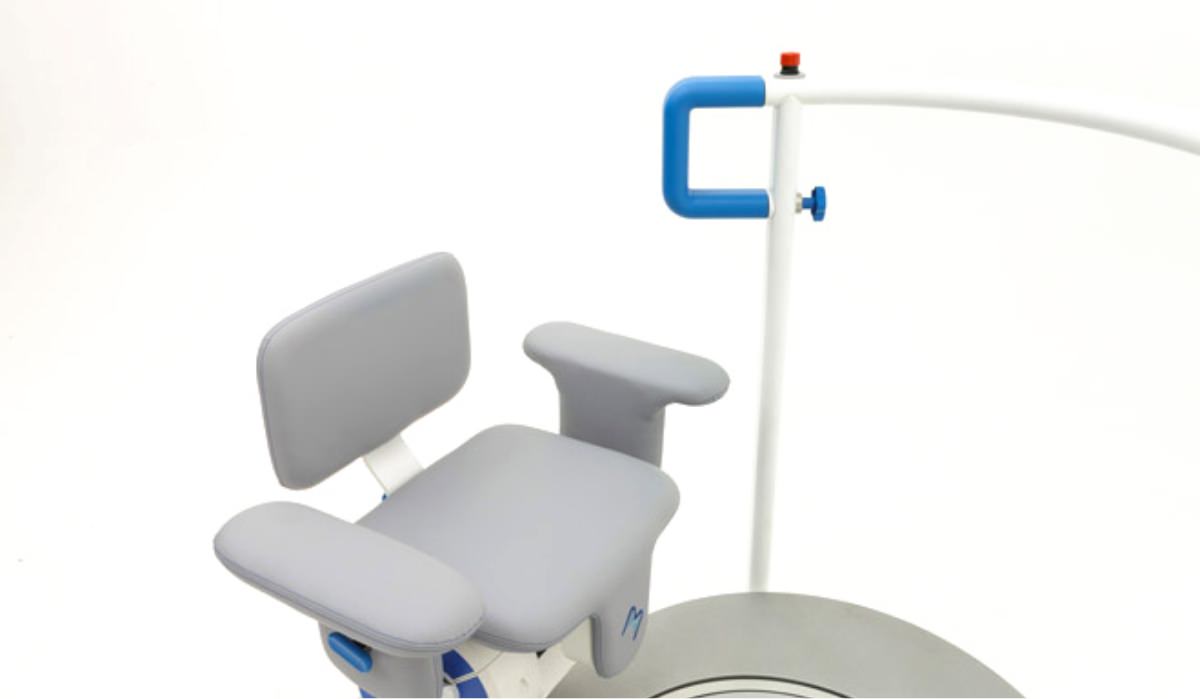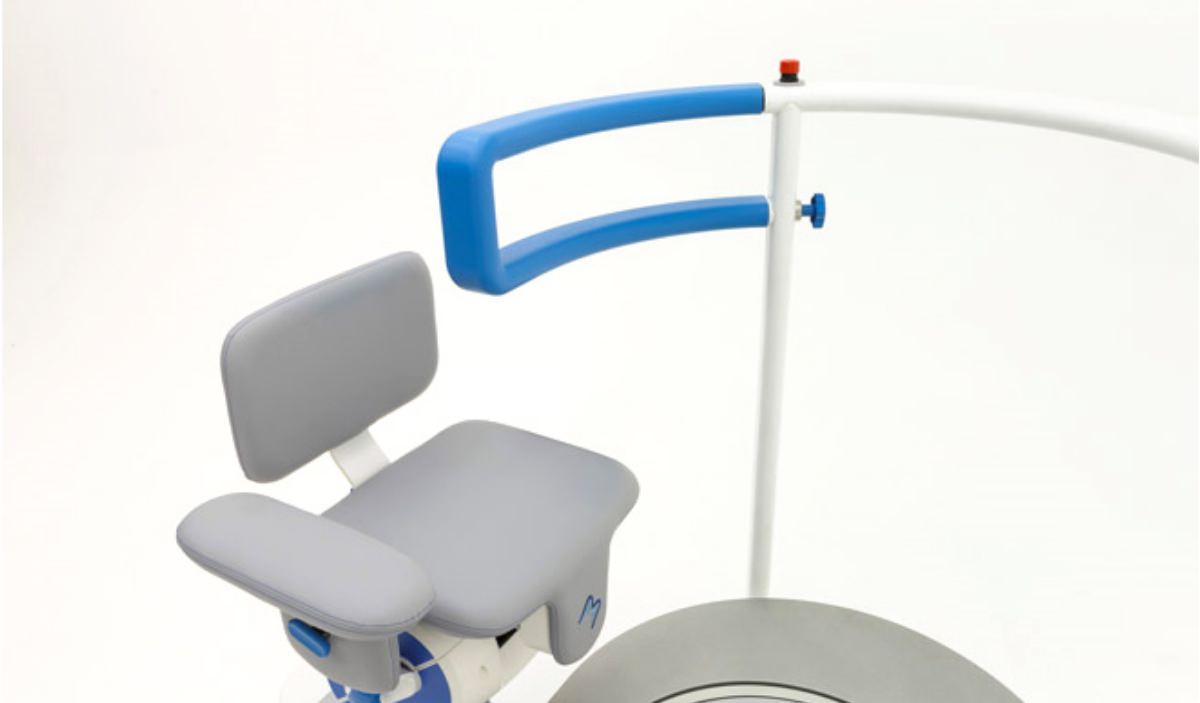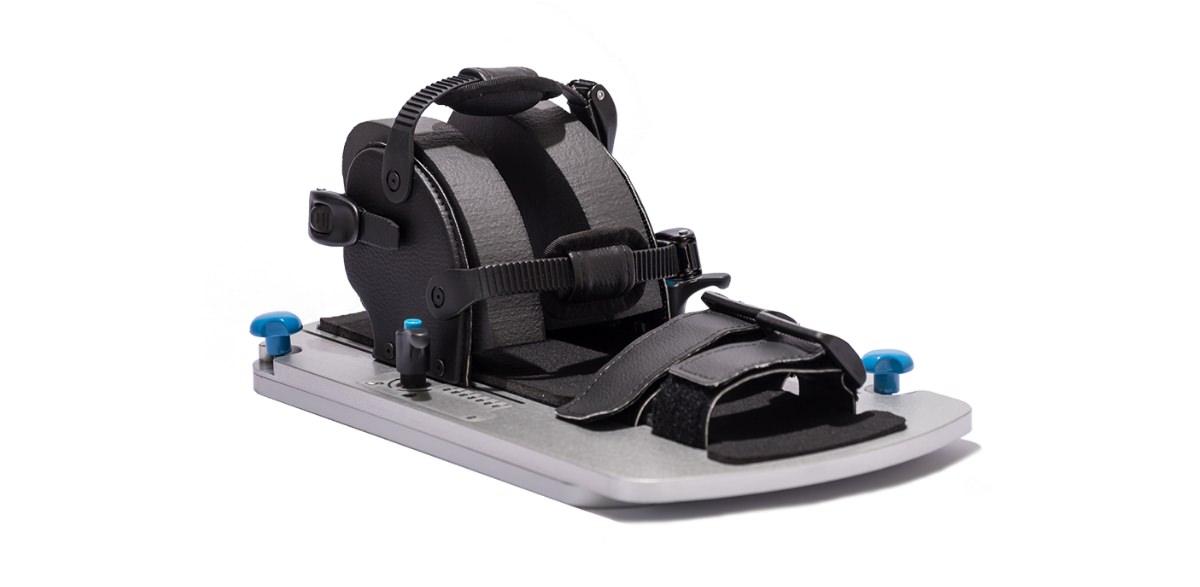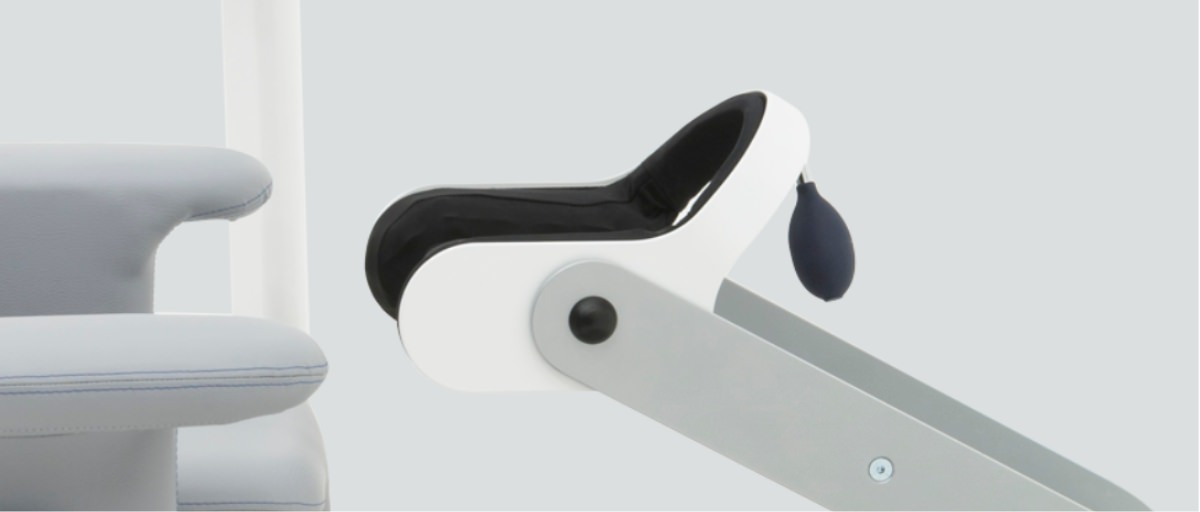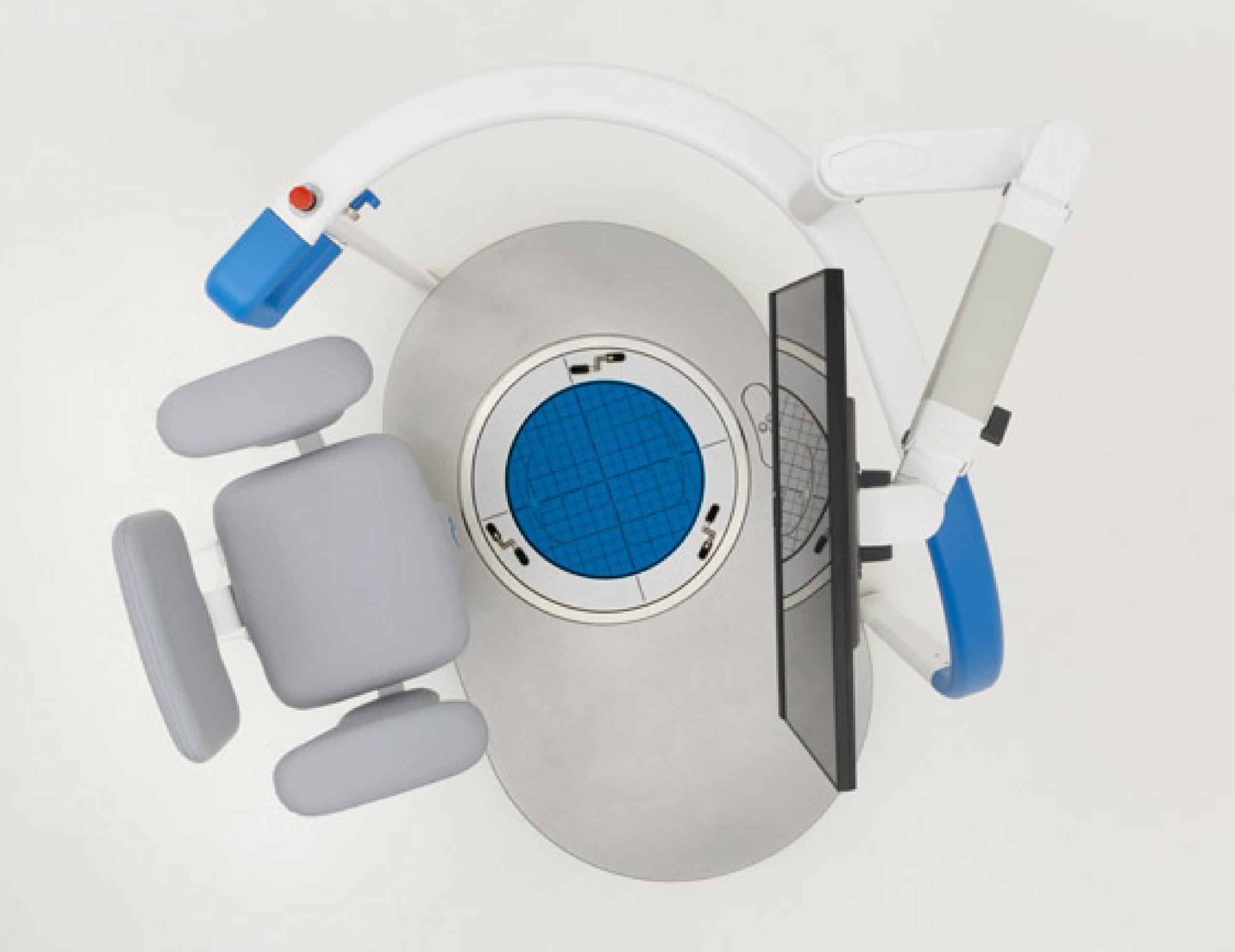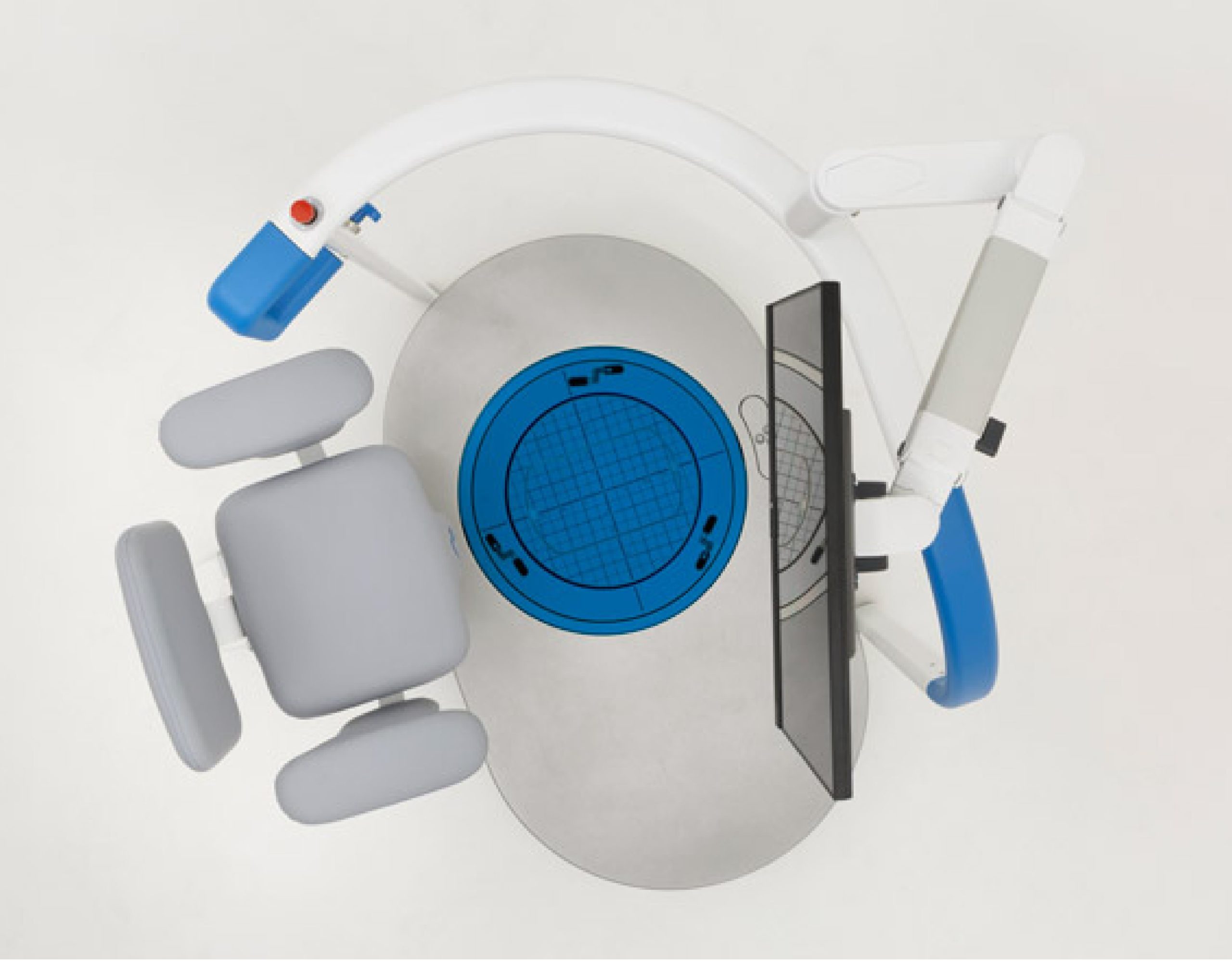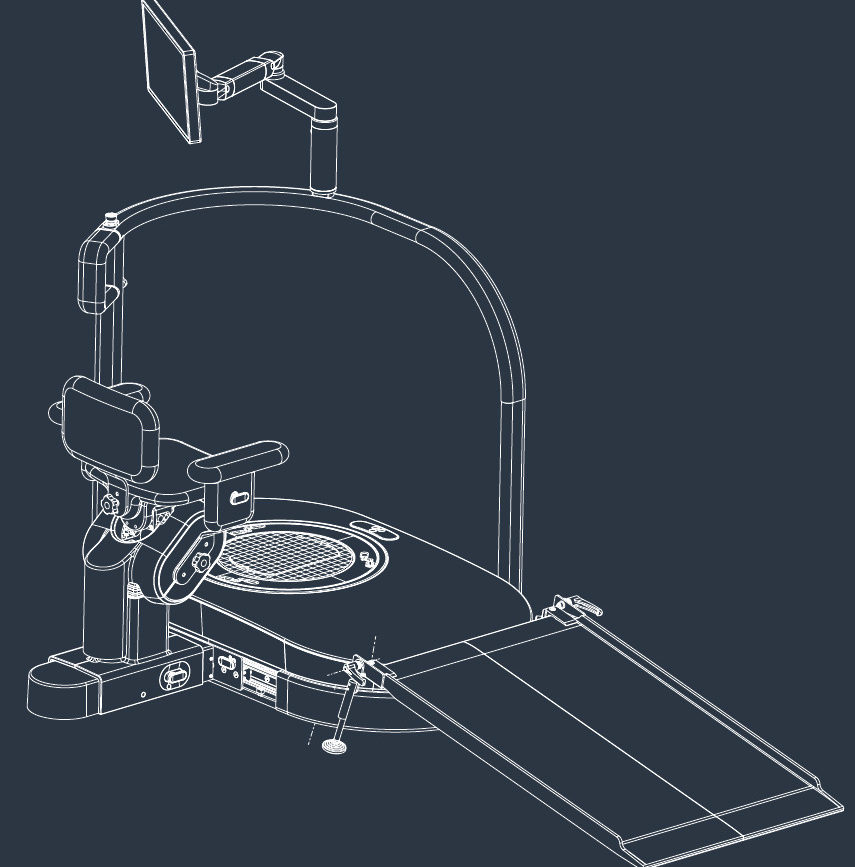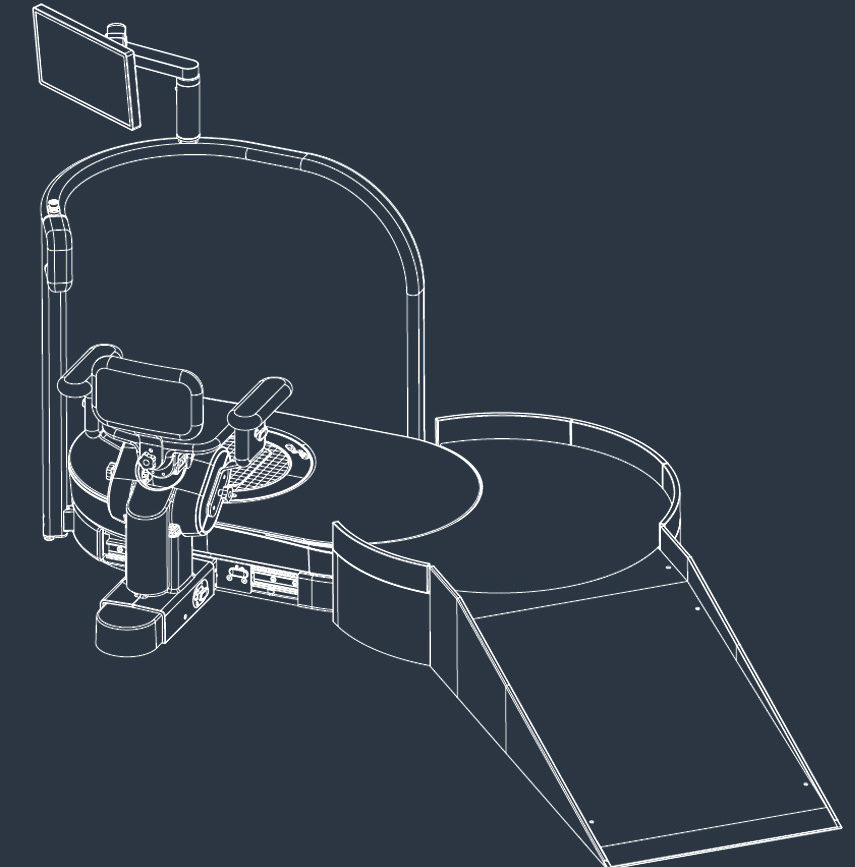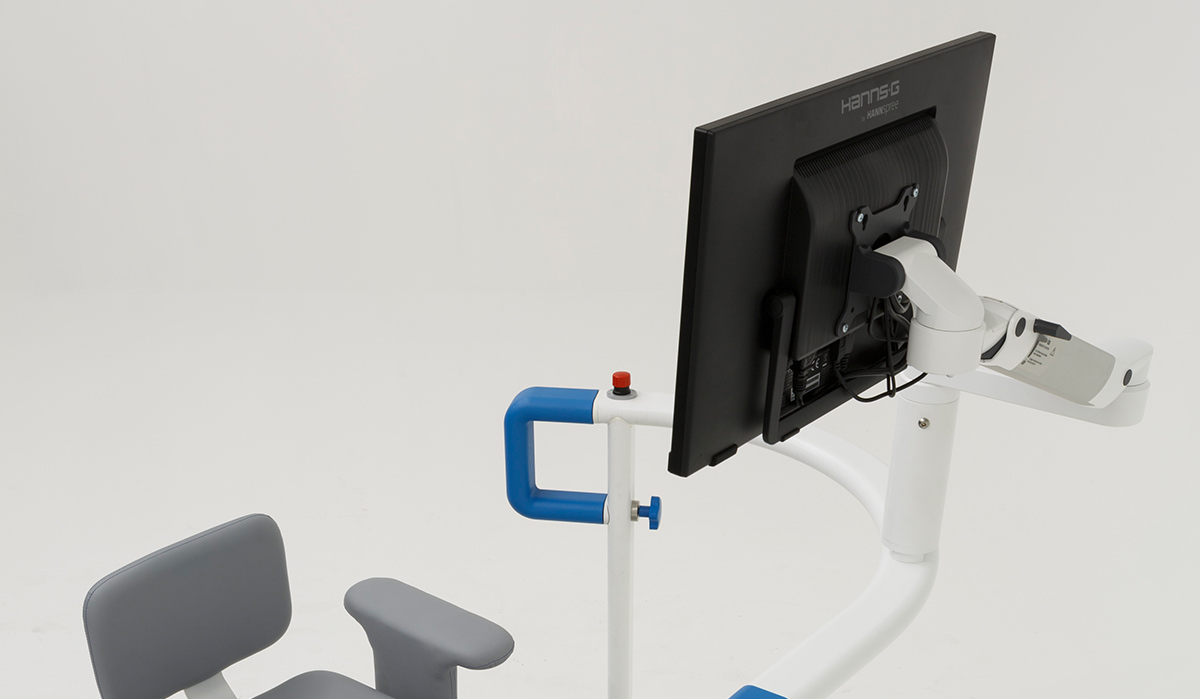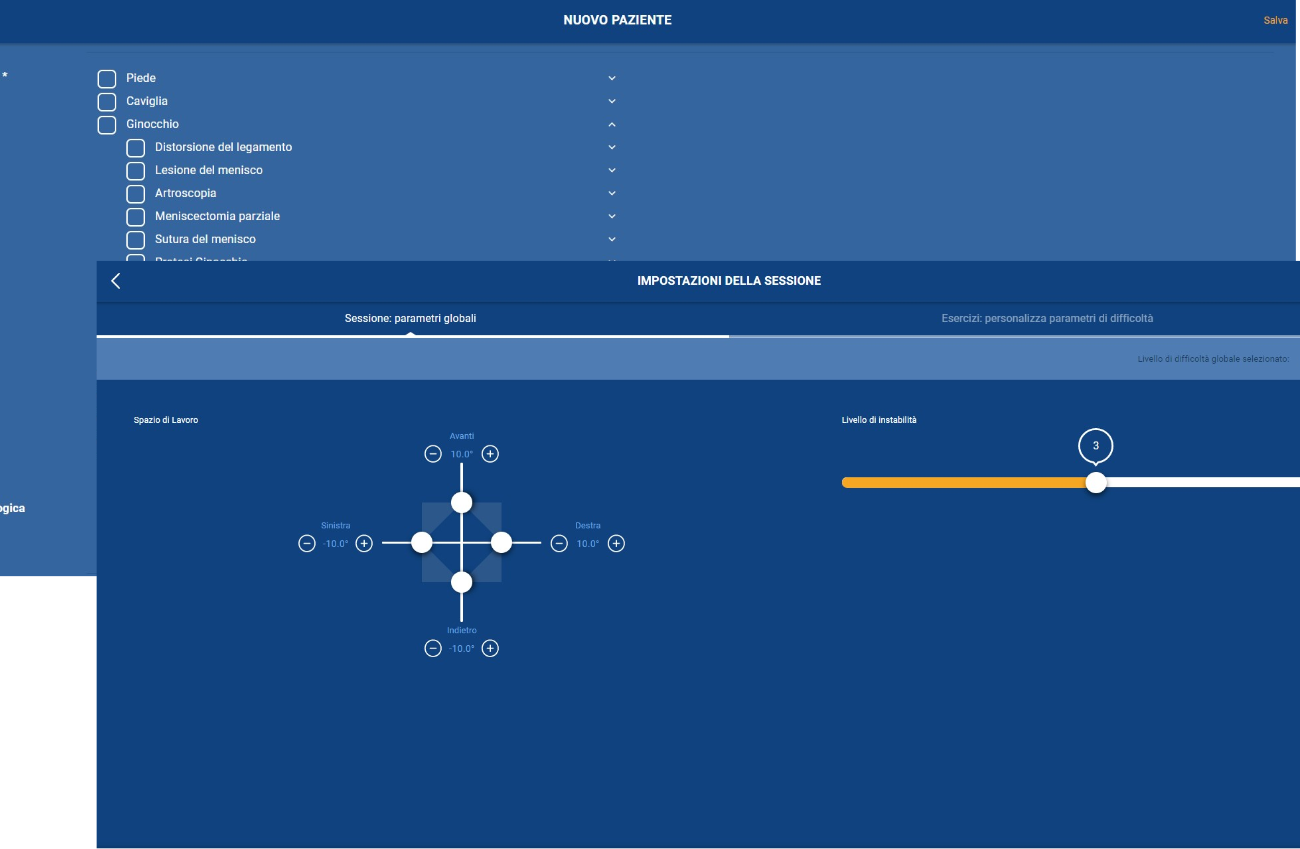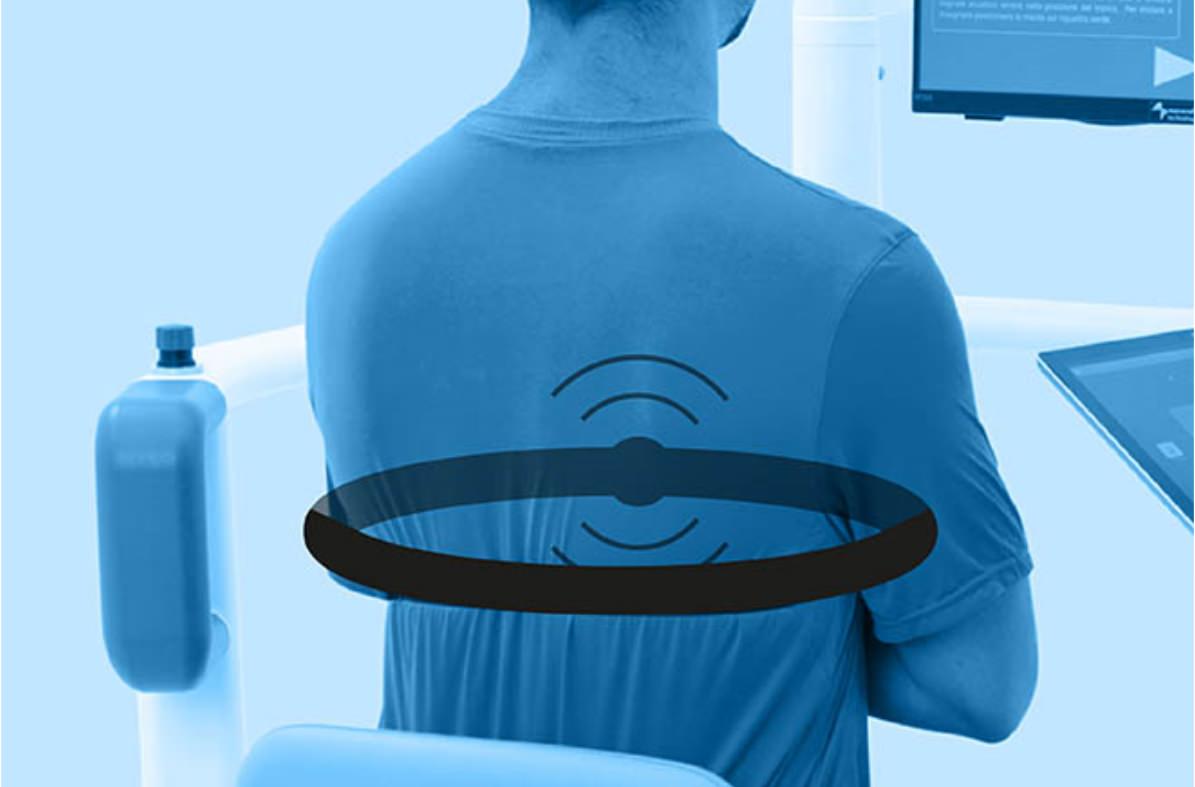HUNOVA
The robotic system that supports doctors, physioterapists and patients
Robotic rehabilitation system
hunova is a robotic device for rehabilitation and the sensorimotor assessment of the lower limbs and trunk, developed to meet the clinical need for an objective assessment and treatment tool to support doctors, physiotherapists and patients throughout the rehabilitation process.
Specific medical sector
hunova is a robotic device that provides physiotherapists with intuitive and user-friendly support for their work in the orthopedic, neurological and geriatric settings.
Orthopedics
In orthopedics and sports medicine, hunova is ideal for rehabilitation of the ankle, knee, hip and spine through passive mobilization, muscle strengthening, postural control and balance exercises.
Geriatrics
In geriatrics, hunova makes allows to work on postural control, proprioception and balance, and is used to prevent and assess the risk of falls in the elderly, and in cognitive recovery.
Neurology
In neurology, hunova is indicated for post-stroke functional rehabilitation, the treatment of degenerative diseases of the central nervous system such as Parkinson’s disease and Multiple Sclerosis, and therapy for peripheral nervous system injuries, providing the patient with core stability, muscle strengthening, coordination, postural control, balance and proprioception exercises.
hunova
Functional Features
"Measure what can be measured, and make measurable what is not so."
Galileo Galilei
hunova integrates assessment and rehabilitation in a synergistic pathway to deliver real-time monitoring of improvements during therapy and result-based treatment customization.
Data integration within the management system
The integration of hunova-generated data into your facility’s “emr” (electronic medical record) system will be simple and automatic thanks to movendo’s new HL7 interface, which is already active in clinical networks in America.
Our indexes:
Predictive, rehabilitative, functional
Specific medical field
In the biomedical field, Movendo Technology has a sound reputation for applying state-of-the-art robotic technology. Since its establishment, it has exploited this know-how to develop customized rehabilitation solutions in order to offer therapists and patients targeted rehabilitation programs for the functional recovery of neuromotor skills.
- Orthopedics
- Geriatrics
- Neurology
Rehabilitation indexes
Affiliated facilities
Discover where you can find our solutions and products in the specialist partner facility closest to you.

